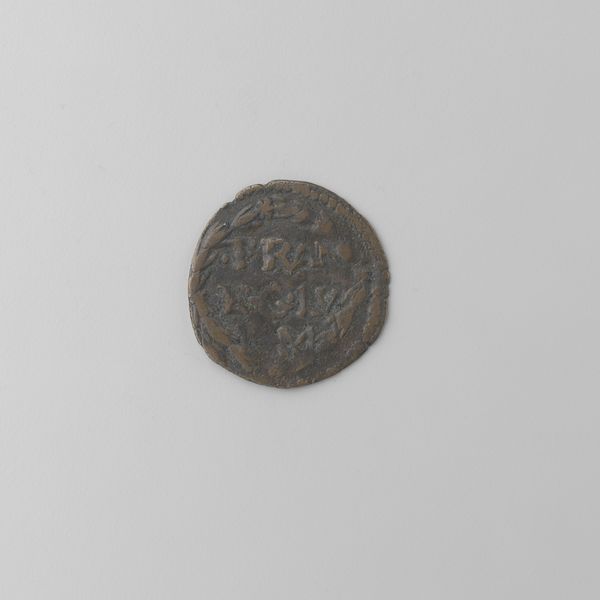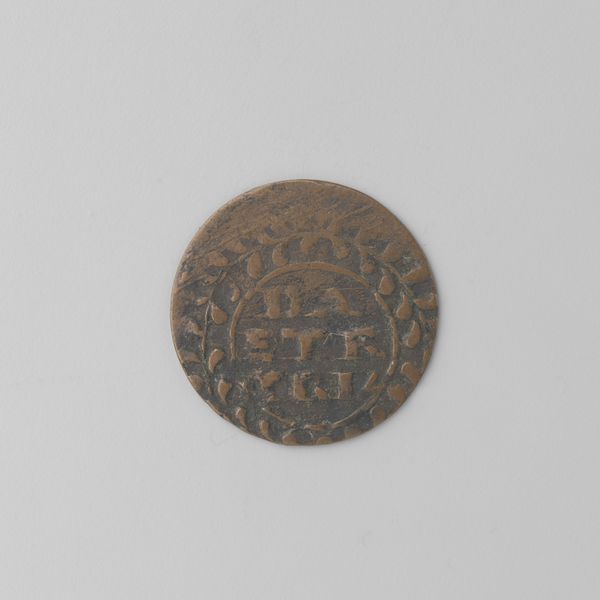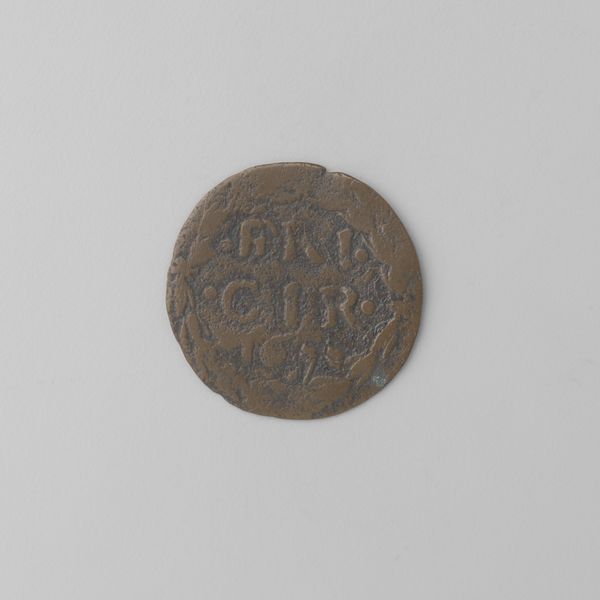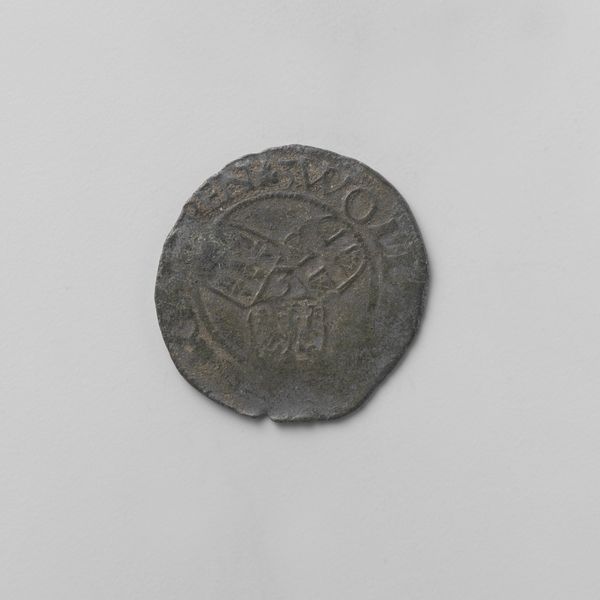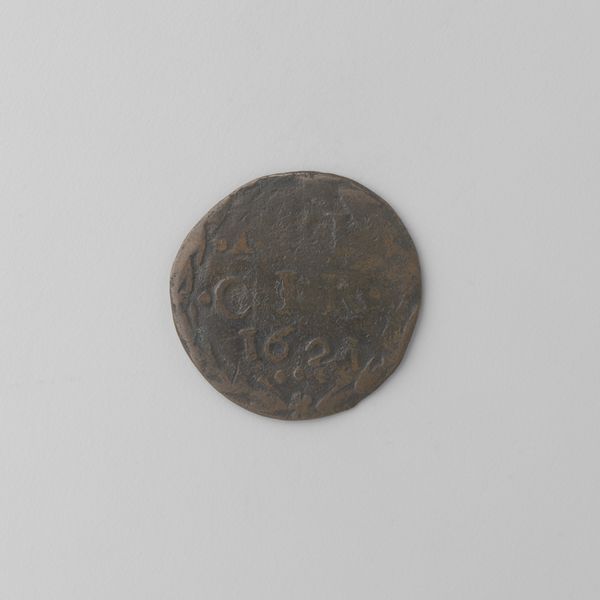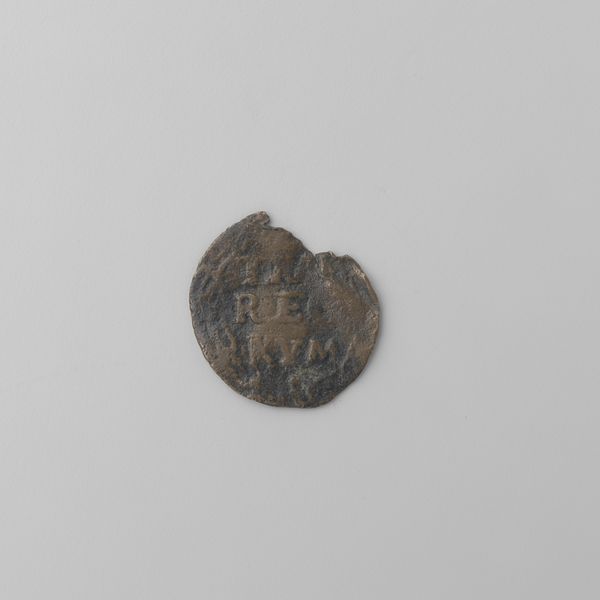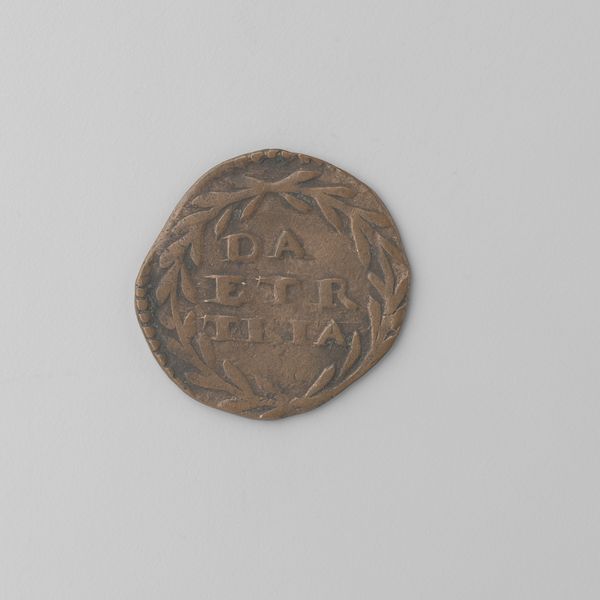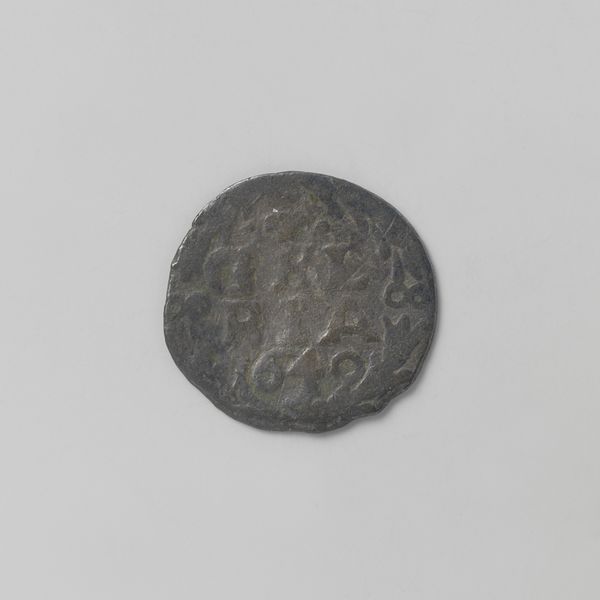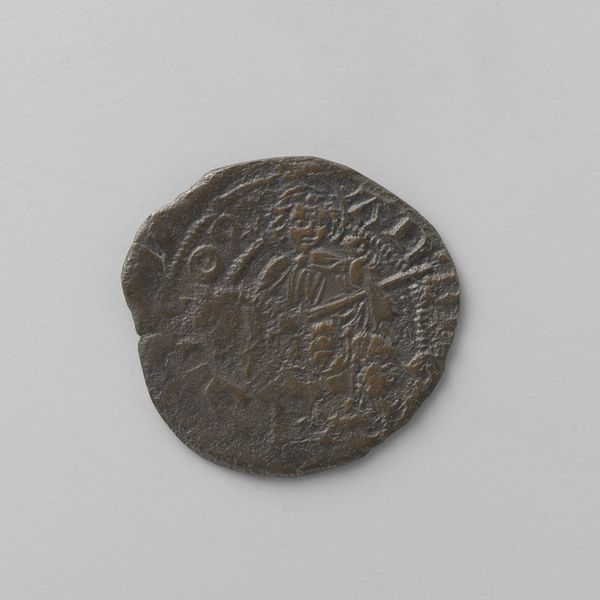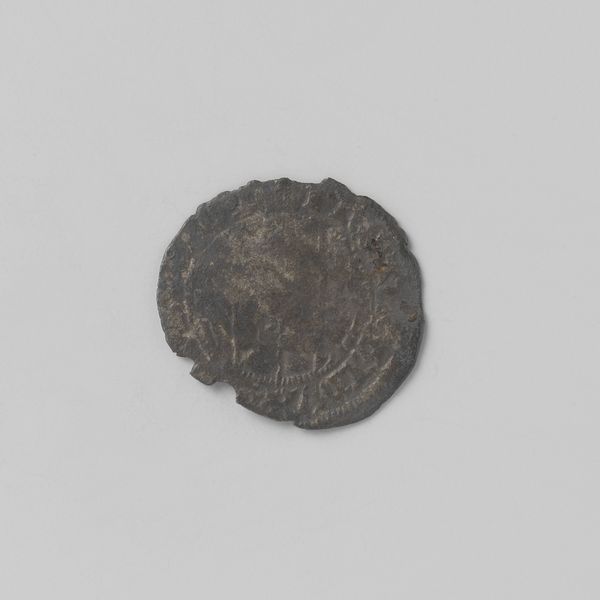
metal, bronze, impasto
#
portrait
#
medieval
#
metal
#
bronze
#
impasto
#
history-painting
#
miniature
Dimensions: diameter 1.9 cm, weight 1.45 gr
Copyright: Rijks Museum: Open Domain
Curator: This small bronze coin is a "Reckheimse duit" from the period of Ferdinand van Aspremont-Lynden, dating from 1636 to 1665. Editor: Immediately, I see a history of power dynamics embedded in this little object. Its worn texture and dark patina evoke a sense of weightiness, even if its literal scale is so miniature. Curator: It is striking how this common material – bronze – embodies concentrated authority. Coins weren’t merely symbolic, they facilitated and standardized market exchange, consolidating economic and by extension social hierarchies. Who minted it, who controlled the metal, how was it distributed? Editor: Right, we see Reckheim, a profile marked in currency intended to solidify that family's social standing, which at the time meant defining not only who belongs but also, more crucially, who doesn't. Currency operates as a gatekeeper. Curator: Precisely! Also, consider the casting. Each coin, identical in form, a testament to replicable, quantifiable value determined by specific interests. Who does this level playing field serve? I want to know what material conditions made this object. Editor: And whose hands has this coin passed through? Can we trace a narrative of debt, power, oppression linked through such material object. A metal link traversing personal spheres but serving larger political aims. I look at this now from our historical juncture, when financial inequality keeps widening. Curator: It also brings up the very practical concerns facing artists working in metal: access to workshops, guild structures. The value ascribed here to bronze itself far exceeds its literal composition as copper and tin. The Reckheim’s perceived "value" stems also from how these ingredients are manipulated and distributed, a proto-industrial economy. Editor: This tiny metal object reminds us how money never exists neutrally, but is bound to narratives of identity and dominance—it is political, especially viewed across centuries. Its survival in this form now turns it into a charged memorial. Curator: Indeed. And thinking materially also prompts further lines of inquiry around sustainability in artwork creation, considering consumption of metal and environmental consequences over its life. The art speaks also in silences. Editor: It seems even the smallest artwork from any period asks for more complex historical, financial questions than we’re used to asking in our daily experience, now rendered visible.
Comments
No comments
Be the first to comment and join the conversation on the ultimate creative platform.
